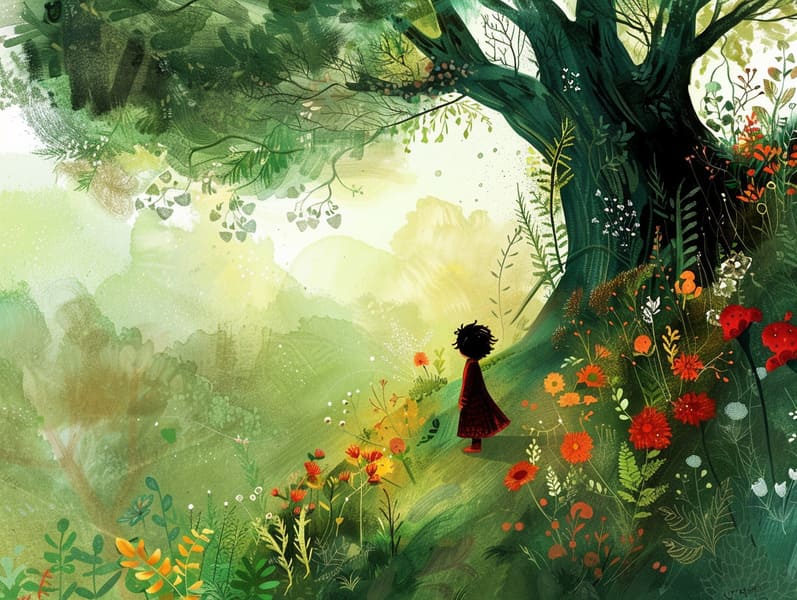Exploring the Roots of Famous Fairy Tales with Its Unchanging Magic.
Exploring the Roots of Famous Fairy Tales with Its Unchanging Magic.
Blog Article

Children's fairy tales have long histories. These stories have been spoken from one generation to the next ages before they were ever written down. They originated from a variety of societies, including Eastern traditions. They were initially transmitted among mature audiences, often carrying themes and messages concerning the societal norms and beliefs of the time.
The Grimm brothers, Jacob and Wilhelm, were among the first to compile many of these beloved tales. Their anthology, "Grimm's Fairy Tales," included classics like "Cinder Maid," "Hansel and Gretel," and "Schneewittchen," which have since become mainstays in the world of classic fairy tales. Similarly, Hans Christian Andersen's magical fairy tales, such as "The Story of the Little Mermaid," and "The Duckling that Could," have touched hearts worldwide, establishing their place in the pantheon of treasured fairy tales.
Despite their historical roots, classic fairy tales remain as meaningful as ever, especially as nighttime stories for kids. These enchanting tales are now available in multiple formats, including beautifully illustrated books, whimsical animations, and internet fairy tales.
Their lasting appeal can be connected to several charming aspects:
Vital Lessons: Ancient fairy tales often provide important moral lessons. Stories like "The Shepherd Boy and the Wolf" teach the benefit of honesty, while "The Race of the Tortoise and the Hare" stress the traits of tenacity and humility. These narratives offer little ones clear distinctions between virtue and vice, forming their moral compass in a subtle yet meaningful way.
Sympathy and Perception: Timeless fairy tales frequently portray heroines facing difficulties and adversities, provoking kids to understand with their struggles and champion their triumphs. For instance, "Beauty's Beast" points out the value of looking beyond appearances to see the true essence of a individual, developing insight and knowledge.
Cultural Knowledge: Many old fairy tales are deeply embedded in the cultural contexts from which they grew. Immersing in these stories can provide delightful insights into different customs, strengthening a sense of cultural awareness and understanding.
Creativity and Fantasy: The enchanted elements in classic fairy tales—spells and potions—encourage children’s inventiveness. These narratives take readers to mythical realms, awakening innovative dreams and a sense of here astonishment that lasts a lifetime.
Classic fairy tales are not only enchanting but also informative. They function as whimsical tools in promoting various intellectual and emotional capacities in kids. When traditional fairy tales are recited, they improve linguistic abilities by showing new word meanings and intricate sentence structures. This practice also develops hearing abilities and attention, as kids concentrate deeply, enthusiastic to see what happens next.
Furthermore, conversing about the themes and characters of ancient fairy tales can promote reasoning skills and problem-solving abilities. Little ones are taught to pinpoint patterns, predict happenings, and realize cause and effect. These talks also benefit little ones convey their thoughts and feelings, adding to their emotional intelligence.
In today’s digital era, the abundance of online storybooks has made these fairy tales more reachable than ever. Web platforms and programs make available wide arrays of Grimm's fairy tales that can be seen or listened via anytime, anywhere. Fairy tales recited are particularly well-liked, extending an engaging way for the young to engage with these fantastical tales. Spoken stories and read-out-loud stories bring characters and settings to life, often accompanied by magical soundtracks and background music that improve the tale experience.
The unfading fascination of old fairy tales lies in their ability to shift to modern times while keeping hold of their basic principles. Contemporary updates of these fairy tales often include more varied characters and modern settings, making them familiar to today’s audience. However, the basic principles of fearlessness, warmth, and honesty remain unchanged, continuing to appeal to listeners of all ages.
Traditional fairy tales also offer a sense of solace and understanding. They introduce a well-arranged narrative with a definite beginning, middle, and end, often ending with the resolution of conflicts and the triumph of good over bad. This assuredness can be placating for young ones, extending a sense of steadiness in an unstable world.
Timeless fairy tales continue to bewitch and teach new generations, maintaining their delight and significance in modern society. As children's night stories, they extend a perfect blend of charm and understanding, enriching moral values, empathy, and creativity. The existence of free fairy tales online and the in demand status of fairy tales recited warrant that these ancient fairy tales remain accessible to new generations.
By continuing and releasing these tales, we continue to acknowledge the rich tapestry of fantasy and cultural heritage. Whether you are experiencing a artistically illustrated book, discovering a electronic collection, or listening to an sound book, the grandeur of children's fairy tales is always within reach. These narratives illustrate of the unfading magic of tales and its ability to tie us across time and space.
Whether you are experiencing a vividly illustrated book, seeing a online library, or listening on an read-aloud story, the mystique of ancient fairy tales is always within reach.
These stories emphasize of the continued strength of storytelling and its ability to hold us together across time and space, casting a charm that fascinates and enlightens alike.